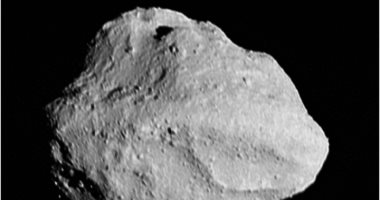Written by Heba El-Sayed Saturday, November 4, 2023 11:00 PM NASA’s Lucy spacecraft is on its way to orbit. Jupiter To study asteroids there, and recently during its flight it made a flyby of another small asteroid called Dinkenish.
The spacecraft confirmed its flyby of the asteroid this week, but when it returned its images, it had a surprise in store: a second, smaller asteroid located next to Dinkenish.
Lucy took images with the Lucy Long-Range Reconnaissance Imager (L’LORRI) camera, which confirmed that the larger asteroid is about 0.5 miles across, while the smaller one is only 0.15 miles across.
As the spacecraft approached Dinkenish, the Lucy team wondered whether it was part of a pair, called a binary system, because of the way its brightness changes over time, and those questions were confirmed when the spacecraft flew by and took its images.
The binary pair is similar to an asteroid that NASA intentionally collided with a spacecraft last year on the DART mission, according to the team.
“We knew this would be the smallest main belt asteroid ever seen up close,” Lucy project scientist Keith Noll of NASA’s Goddard Space Flight Center said in a statement. “The fact that there are two of them makes it even more exciting. In some ways, these asteroids look similar to the binary Didymos and Demorphos near-Earth asteroids observed by DART, but there are some interesting differences that we will investigate.”
As well as being the first opportunity to study these asteroids, the flyby was also used as a test of Lucy’s ability to attach to the asteroid and aim its instruments at a target.
“It indicates that the ultimate tracking system is working as intended, even when the universe presented us with a more difficult target than we expected,” said Tom Kennedy, a guidance and navigation engineer at Lockheed Martin. “It’s one thing to simulate, test and practice, it’s quite another to… We see that happening already.”
“Dinkenish has truly lived up to its name; this is remarkable,” said Hal Levison of the Southwest Research Institute, the principal investigator for Lucy. “When Lucy was originally selected for the flyby, we planned to fly by seven asteroids.
With the addition of Dinkenish, two Trojan satellites, and this satellite, the number is brought to 11.”

